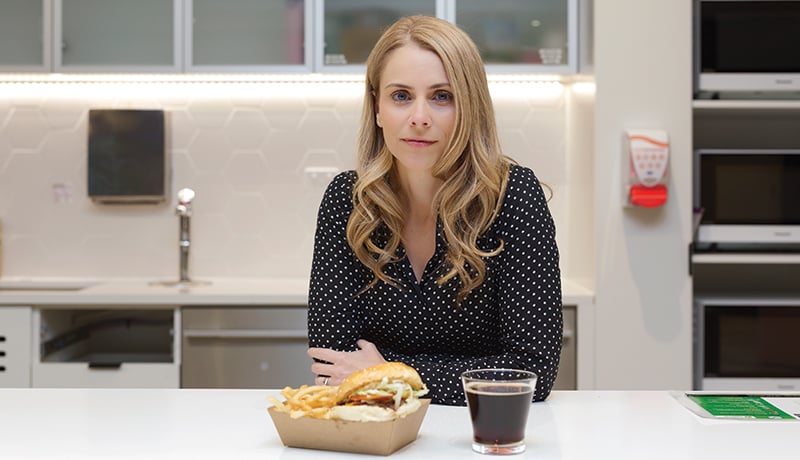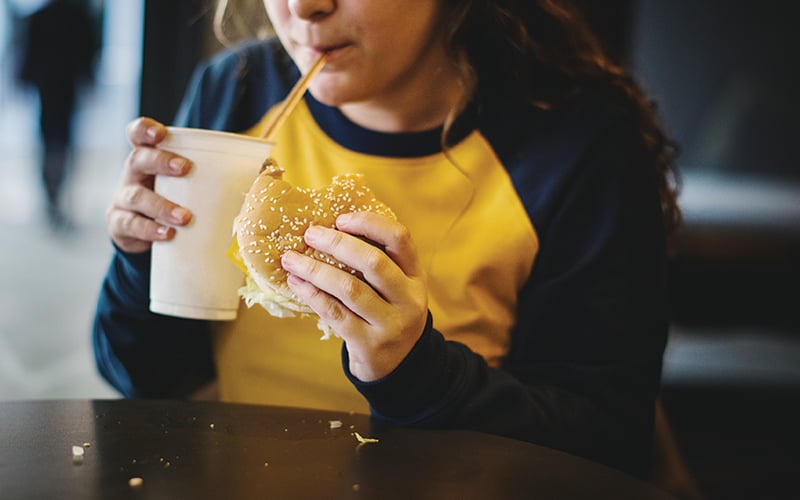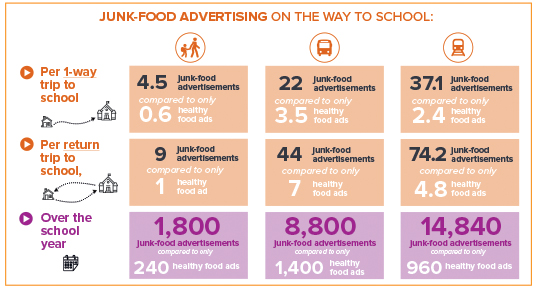
A new rapid research funding model is translating into quick results, with findings informing a public health campaign that could banish much of the unhealthy but influential advertising kids see on the way to and from school.
By mid-2019 population health researcher Gina Trapp had spent more than a year pursuing on and off a project she knew could have a big impact on kids’ health – if only she could get it funded.
Keen to understand how many junk food ads kids were exposed to on their way to and from school – and how this translated into their eating habits and overall health – she had been sending prac students out to comb the streets near schools and take photos of whatever outdoor advertising they came across.
Initial results were shocking – showing kids were being bombarded with junk food ads on buses, trains and static signs within metres of schools – but a lack of funding and staff meant progress was slow.
Enter Cancer Council WA, which had been discussing with Institute leadership ways the two organisations could partner on research to propel quick, easy advocacy wins on shared policy priorities – particularly around childhood obesity.
Among other goals, both organisations were keen to see junk food advertising removed from government-owned property, including public transport and billboards.
Cancer Council WA Obesity Prevention Manager Ainslie Sartori said the organisation approached Healthway about joining forces with the Institute to fund a new advocacy approach.
“The idea was to invest in very quick research, turn it around really fast and use it to advocate for the particular policy change we were seeking from government,” Mrs Sartori said.
Healthway was supportive of the idea and the Rapid Obesity Policy Translation (ROPT) program was born.
With Dr Trapp already chipping away at exactly the kind of research needed, Cancer Council WA commissioned her to formally audit the amount and type of outdoor advertising children were exposed to on the way to and from school.
“It was perfect timing because I’d already been doing this research, but on a shoestring,” Dr Trapp said. “We had this data collection half underway already, but it was heavily reliant on the availability of students.”
Now with the resources she needed, Dr Trapp was able to rapidly scale the project up and fund biostatistical analysis – achieving in just eight months what it would have taken her more than two years to do on her own.
One of the more startling findings of the audit, which logged more than 5,500 outdoor ads, was the sheer number of junk food ads on State-owned assets.

“Eighty per cent of food ads on bus shelters were for junk food and alcohol.”
Together with complementary studies from Curtin and Deakin universities – also backed by the ROPT program – Dr Trapp’s findings underpinned a joint statement by The Kids, Cancer Council WA and other trusted health agencies calling on the WA Government to ban junk food and alcohol advertising on State-owned assets.

At a pre-election forum a couple of months later, Health Minister Roger Cook promised to launch a taskforce to look at implementing such a ban if the government was re-elected.
While the taskforce has not yet materialised, in February this year the City of Mandurah – having been sent the research while considering its own approach to junk food advertising – ratified a policy to prohibit unhealthy food, alcohol and tobacco/smoking advertising on street signs, bench seats, banner poles, bins, billboards and bus shelters on City-managed lands and road reserves.
“The City of Mandurah’s decision is a positive step forward and it would be great to see other local governments following suit, but there’s only so much local governments can do and we’d really like to see the State Government take the lead on this,” Mrs Sartori said.
What's next
- In June this year the State Government announced a further $2.1 million via Healthway to fund Cancer Council WA and The Kids to conduct public health activities over the next three years
- Dr Trapp will lead a project assessing the before and after impact of a fast-food outlet being built across the road from a Perth high school



